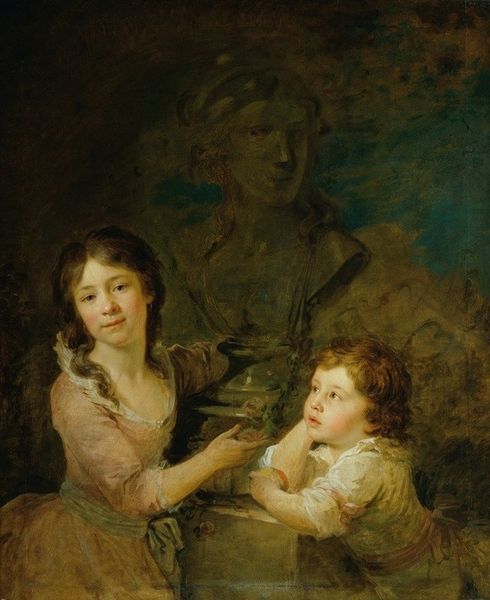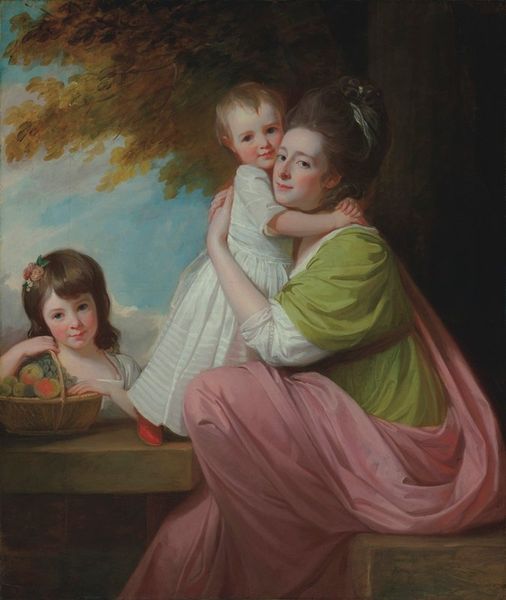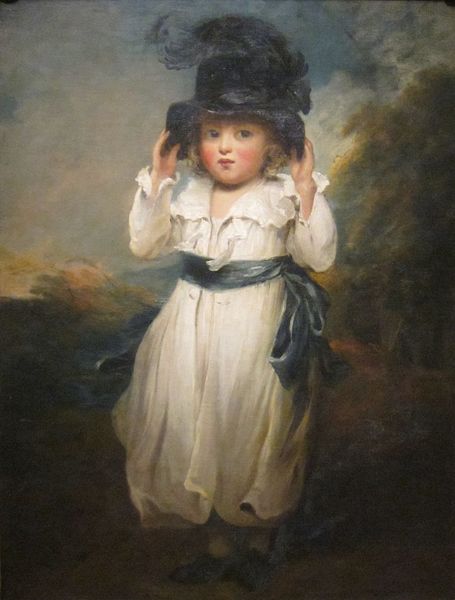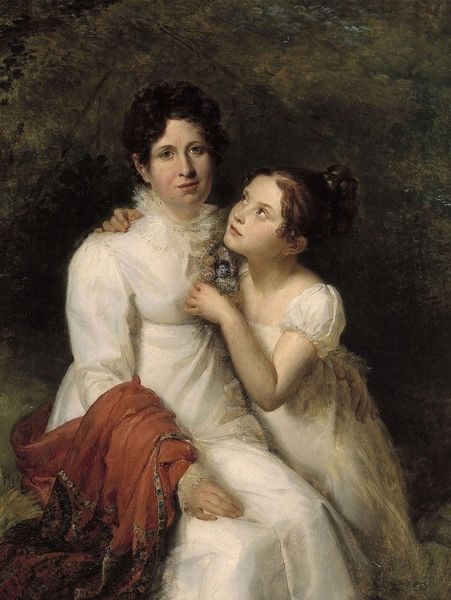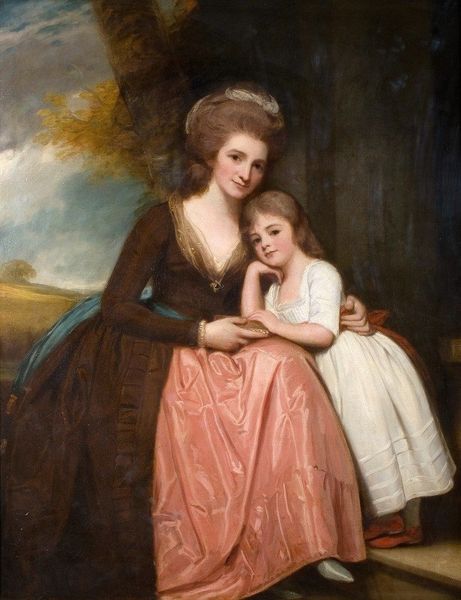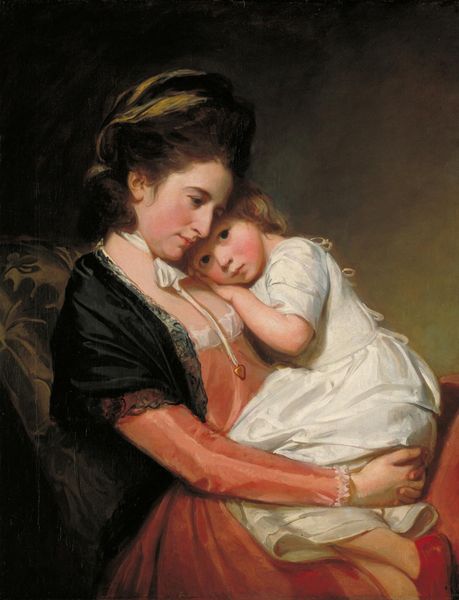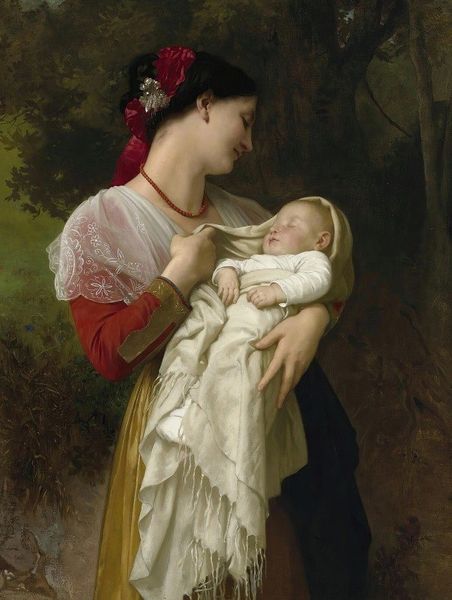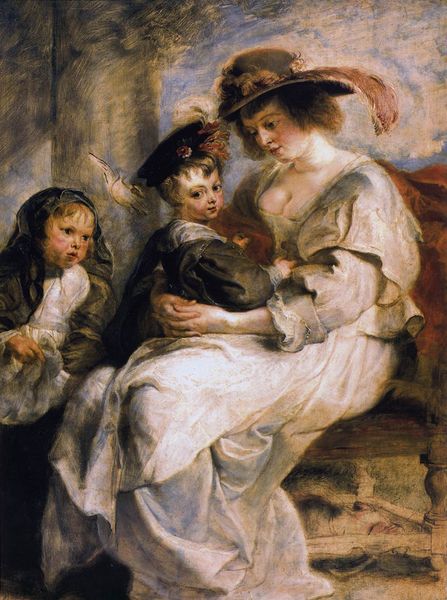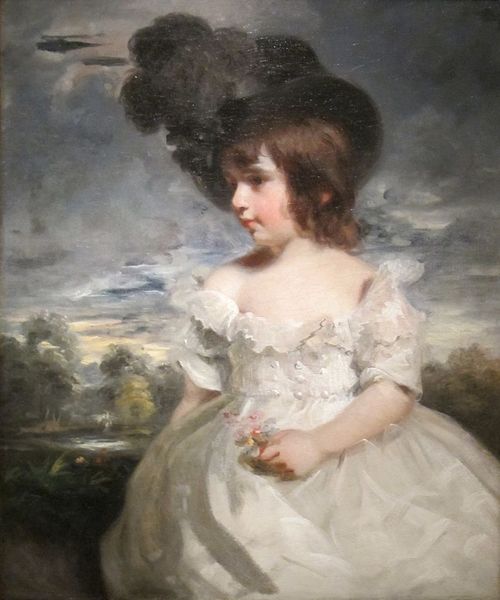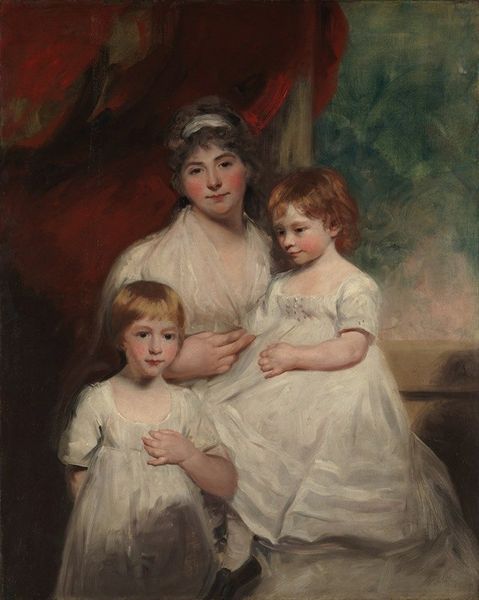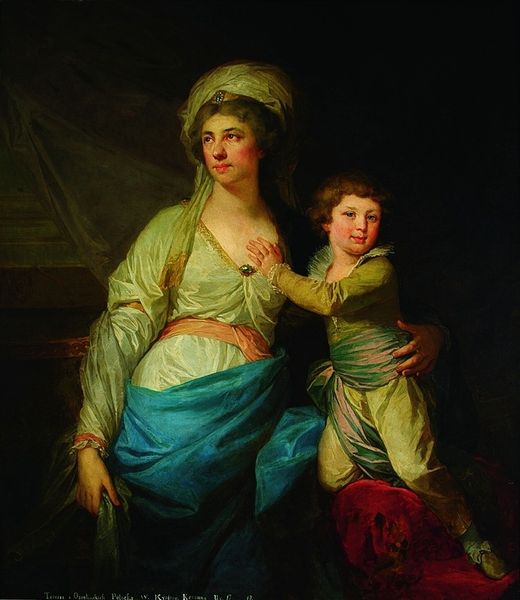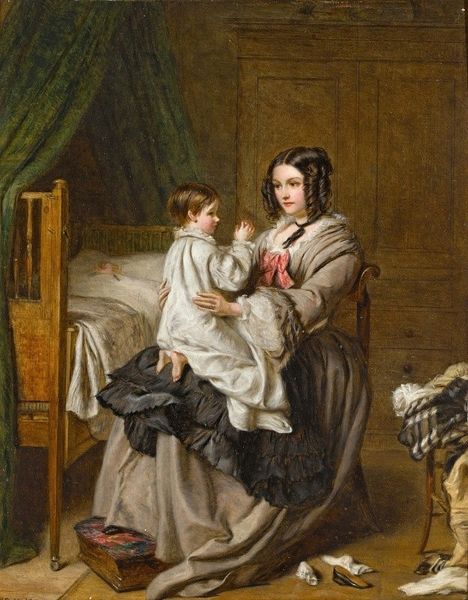
painting, oil-paint
#
portrait
#
character pose
#
figurative
#
imaginative character sketch
#
facial expression drawing
#
character portrait
#
character art
#
painting
#
oil-paint
#
figuration
#
portrait reference
#
portrait head and shoulder
#
romanticism
#
animal drawing portrait
#
portrait drawing
#
facial portrait
Copyright: Public Domain: Artvee
Editor: This is “Mrs. Graham Young and child,” painted around 1810 by Henry Raeburn, using oil paints. It’s striking how gently the mother regards her child; what stands out to you? Curator: I am struck by how this painting, at first glance a simple mother-child portrait, evokes layers of societal expectations and enduring maternal symbolism. Observe the rose adorning Mrs. Young's cap – a subtle, yet powerful emblem. Editor: An emblem of what exactly? Curator: Traditionally, the rose embodies beauty, love, and secrecy, often linked with Venus, the goddess of love. Yet, the positioning, almost out of reach from the child, whispers of a controlled, idealized version of motherhood—one tempered by societal constraints. How do you interpret the child's upward reach? Editor: As pure affection? An innocent gesture? Curator: Indeed, yet the upward reach can also signify aspiration, yearning for something just beyond grasp. This simple act, coupled with the rose’s placement, offers a fascinating contrast. Raeburn captures both the natural bond between mother and child, and the prescribed roles they were expected to fulfill. Does the mother look pleased? Or melancholy? Editor: There's a touch of melancholy, perhaps the weight of those prescribed roles you mentioned. I hadn’t considered the symbolism before, seeing the image as a celebration of motherhood. Curator: Exactly. Raeburn subtly reveals the psychological nuances, making us question whether it is an intimate family moment or performance of familial virtue. It certainly changes our perception. Editor: It truly does. Thanks, that was incredibly insightful!
Comments
No comments
Be the first to comment and join the conversation on the ultimate creative platform.

